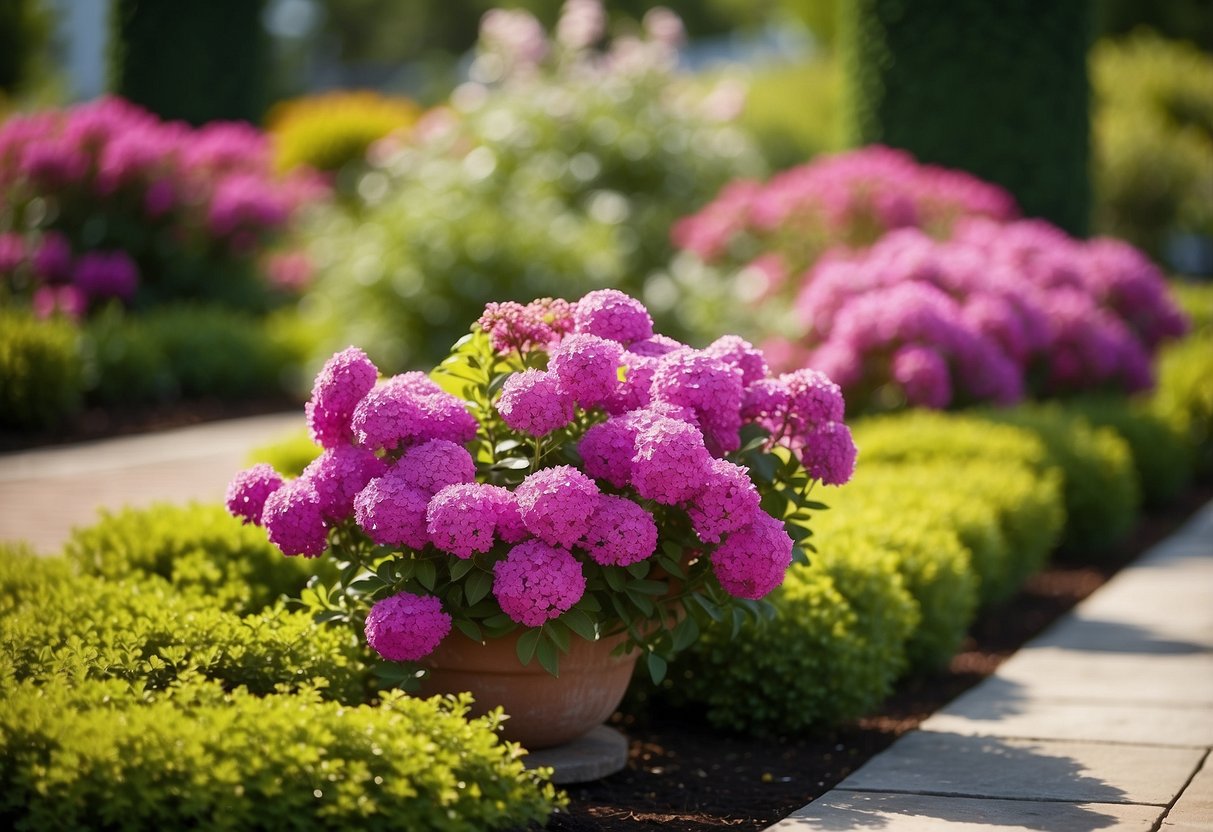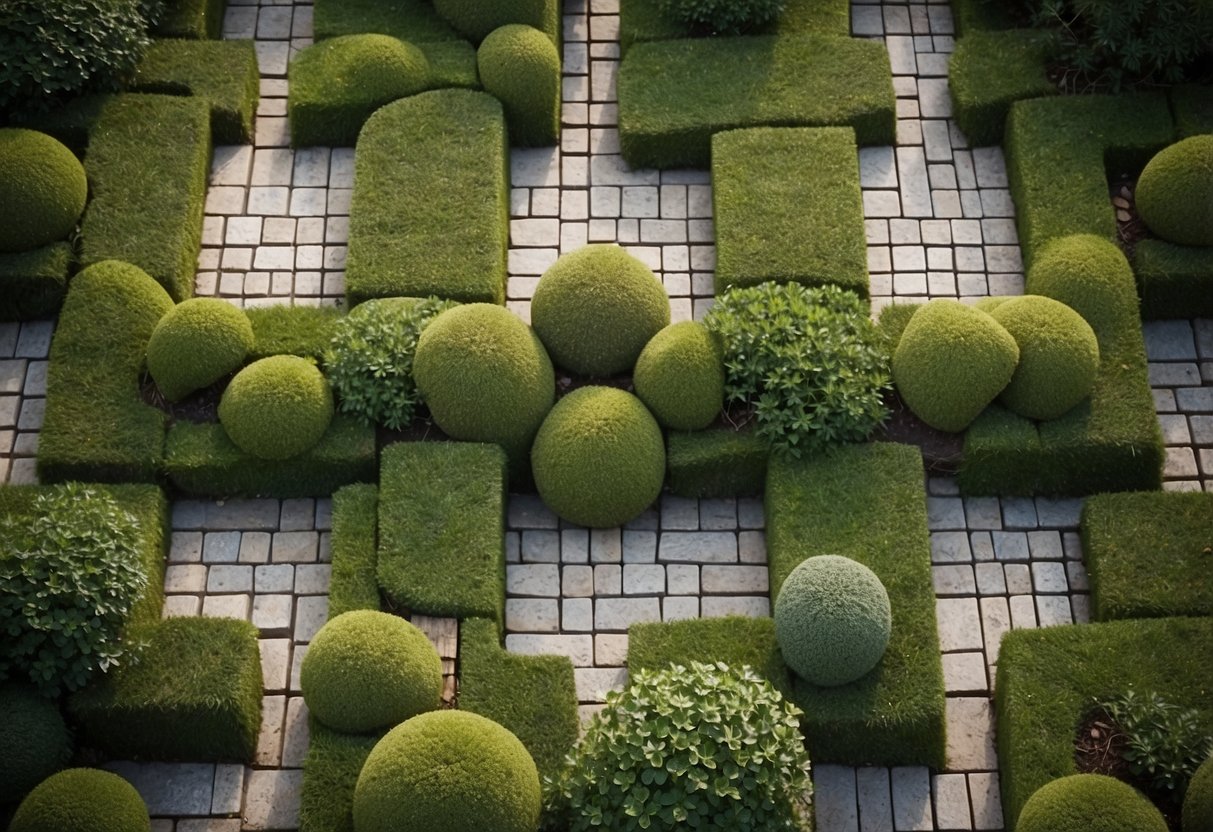Square Garden Layout Ideas: Creative Designs for Your Backyard
Gardening can be a fun and rewarding hobby, especially when you know the best ways to plan and organize your garden space. One popular method is the square-foot gardening system, which maximizes space and yields an impressive variety of vegetables and herbs. It’s perfect for both beginners and seasoned gardeners looking to make the most of a small area.

If you’re searching for efficient and effective garden layout ideas, square-foot gardening offers a fantastic solution. By dividing your garden into small, manageable sections, you can easily rotate crops and maintain healthy soil. This method not only simplifies gardening but also helps you grow more produce in less space.
1) Symmetrical Paths

Creating symmetrical paths in your square garden can make it look tidy and elegant. Start by placing a straight path that runs from the front to the back. This central path can be made of pavers or gravel.
On either side of this path, you can create smaller paths that branch out, making a balanced and organized layout. Simple touches like pruned hedges can enhance this look, offering a classic and formal vibe to your garden. For more ideas, check out these geometric formal garden designs.
2) Raised Beds with Herb Borders

Raised beds can bring great benefits to your garden. One fun idea is creating herb borders around your raised beds. Herb borders not only look pretty, but they also provide fresh flavors for your meals.
Plant herbs like basil, thyme, and rosemary along the edges. These herbs grow well in full sun and are easy to maintain. They can also help repel pests from your other plants.
For more variety, you can mix in some cilantro or parsley. Combining herbs with vegetables can make your garden both beautiful and practical. Check out this raised garden bed design for more inspiration.
3) Central Water Fountain

A central water fountain can become the heart of your square garden. It adds movement and the soothing sound of trickling water.
Choose a style that complements your garden, like a classical tiered fountain or a sleek modern one.
Surround the fountain with symmetrical plantings, such as evergreens or hostas. This creates a relaxing and balanced look for your outdoors.
4) Flowering Shrubs Corners

Flowering shrubs can transform the corners of your square garden into vibrant focal points. Consider adding dwarf dogwoods, which are known for their small white blossoms and fiery red leaves in the fall.
‘Pink Spires’ crabapple trees are another great choice, offering rosy pink flowers in spring and tiny ornamental fruits that last into winter. These shrubs will add color and texture throughout the year.
Planting these shrubs in the corners helps draw the eye and creates a sense of depth and structure in your garden. Remember to space them appropriately to allow for healthy growth.
5) Boxwood Hedge Maze

A boxwood hedge maze can add charm and fun to your garden. These hedges are perfect for creating intricate designs because they grow slowly and are easy to shape.
Boxwoods are also evergreen, so they stay green year-round, keeping your maze looking beautiful in any season. They require minimal maintenance, just regular pruning to keep them in shape.
You can see different designs and ideas for creating a boxwood maze at Veranda and HGTV.
6) Mixed Vegetable Beds

Mixed vegetable beds are a great way to maximize the space in your garden. You can plant different types of vegetables together, which helps in pest control and soil health.
For example, you might plant tomatoes next to basil and onions. This mix can help improve the flavor of tomatoes and deter pests.
You can also try planting beans with carrots and lettuce. Beans can provide nitrogen to the soil, which helps other plants grow better. Experiment with different combinations to find what works best in your garden.
7) Geometric Stone Pathways

Geometric stone pathways add a modern touch to your garden. Use stones shaped as squares, rectangles, or other clean lines.
These types of pathways create a visually appealing pattern. You can use different stone colors to make the design stand out.
Consider a staggered design for added interest. It pairs well with potted plants and garden beds. Look into creative pathway ideas for inspiration.
8) Central Seating Area

Creating a central seating area in your square garden offers a cozy spot to relax and entertain guests. You can place a simple table and chairs in the middle, making it the focal point of your garden.
Surround your central seating with lush plants and flowers to enhance the ambiance. Consider adding a patio to make it even more inviting.
9) Fruit Tree Quarters

Fruit tree quarters are a charming idea for organizing your garden. By planting trees in quarters, you can maximize space and create a visually appealing layout.
Choose a sunny spot for your fruit trees. They need plenty of sunlight to thrive. Make sure to ensure good drainage to prevent root rot and other issues.
For optimal spacing, plant trees about 16-18 feet apart. This will give them room to grow and produce healthy fruit. Visualize your garden’s layout to help each tree flourish.
10) Perennial Flower Edges

Using perennial flowers for garden edges adds color and charm.
Catmint is great for borders, with its purple-and-blue blooms making a perfect contrast to other plants. Moreover, you can enjoy multiple blooming seasons by cutting back the foliage after it flowers.
Another idea is to use Ornamental Onions, Daisies, and Boxwood. These combinations create a colorful border that can make your garden look inviting.
Benefits of a Square Garden Layout

Adopting a square garden layout offers several advantages, especially for gardeners with limited space or those looking for simpler garden management. Key benefits include efficient use of space and simplified garden planning.
Efficient Use of Space
A square garden layout helps you make the most out of small areas. By dividing your garden into square-foot sections, you can grow more plants in less space than traditional rows.
For instance, you can plant 16 radishes in one square foot or one cabbage in a single square. This dense planting means you utilize every bit of your garden efficiently.
With this method, plants grow closer together, reducing the chances of weeds taking root and saving you time on weeding. The compact design also ensures that nutrients, water, and light are evenly distributed, promoting healthier plant growth.
Additionally, a square-foot garden can fit in various locations, such as balconies, rooftops, or small yards. This versatility makes it an excellent choice if you’re dealing with space constraints.
Simplified Garden Planning
Square garden layouts make planning your garden straightforward. By breaking down the garden space into small, manageable sections, you can easily decide what to plant and where.
Each square foot can be dedicated to a different plant, allowing you to grow a variety of vegetables, herbs, or flowers. This helps in rotating crops and preventing soil depletion, as you can change what grows in each square every season.
Using a simple grid system, you can lay out your garden by drawing a plan on paper or using garden planning software. This visual aid simplifies the planting process and helps you keep track of what’s growing in each space.
Moreover, planting in square grids helps you follow precise spacing recommendations, ensuring that each plant has enough room to thrive. This method reduces the guesswork and enhances your gardening success.
Key Design Principles

When designing a square garden layout, it’s crucial to consider symmetry, balance, pathways, and accessibility. These principles help create a cohesive and easy-to-navigate space.
Symmetry and Balance
Symmetry and balance are vital for a pleasing garden design. They involve arranging plants, paths, and structures so that one side mirrors the other. This can create a sense of order and harmony.
You can achieve symmetry by planting the same type of plants on each side of a path. Balance can also be created with different plants that have similar shapes or colors. Garden structures like benches or fountains should be evenly spaced to maintain this visual order.
Symmetrical designs often feel tranquil and are easier to maintain. If you prefer a more casual look, balance things with contrasting plant heights or textures, ensuring no part of the garden feels too heavy or crowded.
Pathways and Accessibility
Well-designed pathways are essential for guiding movement through your garden. They should be wide enough for easy walking and, if needed, wheelchair access. Aim for a minimum width of 3 feet for primary paths.
Materials for pathways can include gravel, brick, or stone. It’s helpful to use materials that contrast with the plants to make the path stand out. Curved pathways can add visual interest but also ensure they don’t compromise the overall flow.
Accessibility means more than just wide paths. Place seating areas at regular intervals for rest stops. Ensure that essential plants and garden features are within easy reach, so you can enjoy and maintain your garden without strenuous effort.
For more ideas on garden layouts, check out this guide to square foot gardening and this ultimate garden layout guide.







